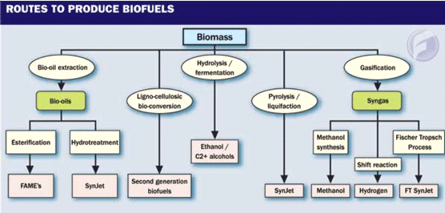Advances in alternative fuel research and commercial potential are at last sparking essential regulatory and logistical changes for the technology.
While commercial developments stall and investments dry up, the rules for pipelines and powerplants are still being crafted in earnest. "People are well aware of how important this is to the public sector, even if there is no money to build refineries, so we'll see how it all goes," says Stan Seto, who is responsible for scrutinising each fuel and writing the US standards.
 |
|---|
© Rex Features |
As the chairman of the relevant subcommittee at standards-setting body ASTM International he is looking to those standards essentially to assure quality and safety. ASTM's expertise covers virtually all industries, establishing guidelines for design and production, of jet fuels, aircraft and the petroleum industry as a whole.
The first focus is on synthetic fuels, converted from coal and natural gas, and eventually any carbon-based feedstock, into a drop-in kerosene substitute through a 70-year-old process called Fischer-Tropsch.
By June qualified producers could know what standards they will have to meet. A vote on 7 December failed to establish that specification outright, but, Seto says: "The attempt did accomplish what we wanted it to do.
It got all or most of the problems on the table." An official research paper was initiated, which brings added technical information to meetings this spring. If the research paper, Aviation Turbine Fuel Containing Synthesised Hydrocarbons, is approved and luck holds, Seto says, "we then immediately ballot the specification at the committee level, with the hope of no negatives, and could have a publishable specification by June".
MULTIPLE BRANDS
By 2010, multiple brands of 100% Fischer-Tropsch kerosene may be on the market. That is on one of the many roadmaps of the Commercial Aviation Alternative Fuels Initiative (CAAFI), the industry and government organisation whose members shoulder much of ASTM's task.
"As we achieve success with certification and quantification of greenhouse gas analysis methodologies, the development of production and distribution infrastructure has become a high priority," says Richard Altman, CAAFI executive director. The organisation has only recently formed a business roadmap to join its other pursuits. "It is a good way to communicate what has been done, what's being planned and what might be needed in specific areas," says Altman.

More than 20 end users are working with CAAFI's business and economics team to prepare the infrastructure for these new fuels. New partnerships and new solutions are forming after a 9 September meeting co-hosted by the US Department of Commerce, the Federal Aviation Administration and the Air Transport Association of America (ATA). There, 26 energy producers and 12 other government agencies thought ahead to deployment.
Aviation is establishing itself as a leader in alternatives by being at the forefront, says Altman. "Two years ago we were told pretty much that we don't matter as we're less than 10% of transport costs," he says. "Airports, on-base fuel operations and pipeline companies are now being engaged in these efforts." In addition, he says the Airport Cooperative Research Board, managed by the FAA's Transportation Research Board, is in the final stages of creating a handbook for airports and fuel suppliers as they seek to calculate cost-benefit analysis for the introduction of alternative fuels.
ATA chief economist John Heimlich notes that purchasing and pumping alternative fuels should be no more complex because only a drop-in fuel will be acceptable: "It appears that many producers are able to meet our criteria, but they still lack ASTM certification, which is the seal of approval for our number one criterion, namely, safety and quality."
Co-ordinating fuel purchases is one goal of new co-operative agreements. "Such a group could be invaluable in sharing risk and thus making otherwise uneconomic purchases viable," he says.
Preparation is ongoing, but Heimlich is uncertain alternative fuels will eventually be cheaper than kerosene. "The answer to this remains to be seen," he says. "It's not just about price. Don't forget the appeal of supply security and reliability and minimal volatility."
REAL DATA
While the business offices clear the way, the research arms continue testing. "Test flights were a good start," says Heimlich, "but now we need lots of real data, not in the university, but in engine test labs, etc. We really need the airframe and engine manufacturers to share their test data with airline fuel quality specialists and with CAAFI and ASTM for testing and certification purposes."
Part of the ATA's alternative fuels principles document requires new fuels to have less of an environmental impact than today's fuels, but before October there was no common method against which fuels could be measured. Released on Earth Day last year, that document was a significant milestone to lay out common ground and goals.
"Among other things," ATA environmental affairs president Nancy Young says, "the use of feedstocks for jet fuel must not compete with other critical feedstock uses, such as food."
Those goals are echoed by CAAFI's Environmental Team, which set the outline against which new and existing fuels can be judged. The team has now defined its approach to assessing greenhouse gases from "well to wake".
Altman explains: "It's a very definitive approach that we'll be able to take, using two firm pillars, mainly the FAA's mission forecasting mechanisms, a globally disciplined and accepted approach."
The other pillar is calculating the first part of the lifecycle analysis, or a "well to wheel basis" that measures impacts of everything associated with producing the fuel. At the fore of reducing the many unknowns of fuel and aircraft impacts is the Partner research initiative.
Its latest initiative, Project 28, is an environmental cost-benefit analysis of alternative jet fuels, while Project 17, examining the potential of near-term alternatives, is nearly complete. "We also expect the report for Project 20, looking at emissions characteristics of alternatives, to be available soon.
Project 9, which aims to measure emissions is ongoing and periodically reports progress," says Partner investigator and Massachusetts Institute of Technology research engineer James Hileman.
The next CAAFI meeting at the end of January is in Dayton, Ohio, where the research and development team is being hosted by the US Air Force Research Laboratory and Dayton University. "The primary focus of the meeting is the creation of joint renewable biofuel roadmaps in partnership with USAF for both R&D overall and for feedstocks suitable for renewable jet fuel in particular," says Altman.
USAF TESTING
The USAF continues to spearhead engine and airframe testing of synthetic fuels in its drive to certificate its entire fleet for Fischer-Tropsch fuels by 2011. On 14 January, the latest test flight took off from Memphis Air National Guard Base with synthetic blends in each engine of a Lockheed Martin C-5.
In August 2007, the Boeing B-52H became the first certificated on the fuel made from natural gas, with the Boeing C-17 following in December of that year. Flight tests of the Lockheed Martin F-22 are complete, as are ground tests of its F119 engines at Pratt & Whitney's West Palm Beach facility in Florida, as are tests on the Boeing F-15 and KC-135.
Planning for synthetic fuel trials with the Fairchild A-10 ground-attack aircraft, Lockheed C-130 transport and General Atomics MQ-9 Reaper and Northrop Grumman RQ-4 Global Hawk unmanned air vehicles are ongoing, and the aim is to "fly all by summer 2009", says Jeffrey Braun, director of the USAF Alternative Fuels Certification Office. Another order for 1.27 million litres (335,000USgal) of synthetic fuel will be needed this year.
If the USAF is to meet half its domestic fuel needs with synthetic products by 2016, production facilities will be needed. Promoting that is one aim for a Fischer-Tropsch facility at Malmstrom AFB in Montana - listed as under-used - where coal would feed jet fuel production at a joint public/private plant. Almost a year after bids were accepted for that project, the air force is a month behind announcing its partner company.
"There has been a decision made, but the results are not yet public," says the USAF. The governor of Montana has been a strong proponent of opening the state's significant coal reserves to create jobs and ease dependence on foreign oil.
The Malmstrom site could be a pilot project to prove viability of carbon capture and storage, which injects into the Earth the massive quantities of carbon dioxide released during the conversion process. So far that storage method is untested, but it is essential to the future viability of synthetic fuels.
Although Fischer-Tropsch fuels appear to be kerosene's initial successor for jets, replacements for avgas are more of a mystery. Last May, a significant consensus was reached to undergo the painful transition away from leaded avgas.
With that agreement from the board of the General Aviation Manufacturers Association, manufacturers are weighing new engines or modifications along with new airframe design needs and scrutinising every possible fuel alternative.
The presence of 100 LL (for low lead) avgas is dwindling and in the USA the Environmental Protection Agency has issued the first of many new regulations to force change.
A lawsuit from the environmental group Friends of the Earth, which contends that 30 years of exceptions for 100 LL avgas is enough, is accelerating that timeline and engine manufacturers are dusting off century-old research to approach fuel creation anew.
The high-performance piston aircraft that need the high octane to operate are no more than 30% of the fleet, but they are the top sellers and burn 80% of the avgas. The more modest majority of the fleet does not need octane-boosting lead, but is potentially losing its own fuel source as ethanol floods its troublesome corrosion and range loss into the automotive fuel supply.
"There have been different kinds of engines developed, but the greatest challenge in terms of an unleaded fuel is our existing fleet of aircraft," says Walter Desrosier, GAMA vice-president engineering and maintenance. "I do believe that there's going to be a significant shift in emphasis from research to development and implementation," he adds.
Source: Flight International























